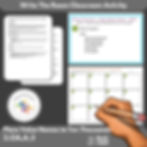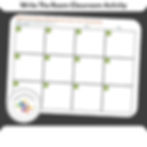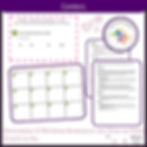Progress monitoring is a crucial element in special education, enabling teachers to track the advancement of students with disabilities. Data-based individualization (DBI) plays a vital role in progress monitoring within a multi-tiered system of support (MTSS). This process helps determine if students are making adequate progress towards their goals, ensuring that instructional methods are effective and accommodations are appropriate. By understanding and implementing effective progress monitoring strategies, teachers can significantly enhance their instructional approaches and support implementation and student success.
Key Takeaway
Effective progress monitoring involves using a variety of tools, setting clear objectives, and regularly analyzing progress monitoring data to inform instructional adjustments. This article provides 11 practical tips to increase the success of progress monitoring in special education settings.
Understanding Progress Monitoring
Definition and Purpose
Progress monitoring is a standardized process of evaluating progress toward a performance target, based on rates of improvement from frequent assessments of specific skills. It’s used to identify students who need evidence-based interventions to optimize their success. Progress monitoring is a key component of a multi-tiered system of support (MTSS) and is used to inform data-based decision making.
Benefits of Progress Monitoring
Improving Student Progress
Progress monitoring helps many educators track and evaluate student learning outcomes, determining if instructional or intervention strategies changes are needed. It enables educators to determine eligibility for additional educational services, including special education. Progress monitoring promotes student success by identifying areas of need and providing targeted support.
What is Progress Monitoring?
Progress monitoring is a continuous process of assessing students’ progress towards specific educational goals. It provides critical data that helps educators make informed decisions about necessary interventions and accommodations through student based assessments. Unlike one-time assessments, progress monitoring involves regular and systematic data collection to evaluate student progress over time.
Use Case Example:
Consider Sarah, a third-grade level student with an IEP goal to improve her reading fluency. Her teacher uses weekly oral reading tests and running records to track her progress. By analyzing the data, the teacher identifies that Sarah struggles with decoding multi-syllabic words and adjusts instruction to focus more on phonics.
Good Data vs. Poor Data
Good data is accurate, timely, and relevant, enabling informed decision-making. Poor data, on the other hand, is often inaccurate, outdated, or irrelevant, leading to misguided instructional decisions.
Best Practice:
Ensure that data collection methods are reliable and consistent. Use standardized tools and maintain regular intervals for data collection to enhance the accuracy and relevance of the data.
Progress Monitoring vs. Assessment
Progress monitoring differs from assessment in that it is an ongoing process focused on measuring student progress over time. Assessments are typically one-time measures that evaluate student performance at a specific point.
Use Case Example:
While an annual state assessment provides a snapshot of a student's academic abilities, progress monitoring, like bi-weekly math skill checks, offers continuous insights into the student's growth and areas needing intervention.
Types and Examples of Progress Monitoring
Progress monitoring tools and techniques vary widely. Some examples include:
Checklists or surveys: Track functional abilities.
Oral reading tests: Measure decoding skills.
Anecdotal records: Document changes in behavior or engagement.
Academic assessments: Track skills in reading, mathematics, or writing.
Frequency counts: Record the occurrence of specific behaviors.
Running records: Monitor reading accuracy and fluency.
Time-sampling: Track on-task behavior.
Frequency of Data Collection
The frequency of progress monitoring depends on the student's needs. Some students may require daily data collection, while others might only need data collected weekly or even annually. For IEP goals, systematic data collection should occur at least three times a year, spaced four to six weeks apart.
Best Practice:
Align data collection frequency with the intensity of the intervention. For example, daily monitoring might be necessary for a student receiving intensive intervention reading programs, while less frequent checks might suffice for those with less critical needs.
Common Progress-Monitoring Goals
1. Reading Skills
Chart Title: Weekly Reading Fluency Progress
2. Mathematics Skills
Chart Title: Weekly Math Problem Solving Progress

3. Spelling Skills
Chart Title: Weekly Spelling Test Scores

4. Writing Skills
Chart Title: Weekly Writing Sample Analysis

5. Conversational Language Skills
Chart Title: Weekly Conversational Language Progress

6. Fine Motor Skills
Chart Title: Weekly Fine Motor Skills Progress

7. Gross Motor Skills
Chart Title: Weekly Gross Motor Skills Progress

8. Self-Help Skills
Chart Title: Weekly Self-Help Skills Progress

These sample charts illustrate the progress monitoring data over a six-week period for various skills.
Using Progress Monitoring Data to Improve Instruction
Once collected, progress monitoring data can be used to adjust instruction and interventions. For instance, if a student is not making the expected progress, the teacher can modify their instructional approach to better meet the student's needs.
Use Case Example:
If John, a fifth-grader, is not improving in his math skills as expected, his teacher might introduce hands-on manipulatives or visual aids to enhance his understanding of mathematics concepts. Tracking correct digits in his responses can help in assessing his improvement accurately.
Effective Progress Monitoring Strategies
Setting Goals and Selecting Assessments
Establish clear, measurable goals that are specific, attainable, and directly aligned with individual students’ needs. Select assessment measures that accurately measure progress towards established goals, such as curriculum-based measures (CBMs) and computer-adaptive tests (CATs).
Leveraging Progress Monitoring Data
Use progress monitoring data to make informed decisions about the next step in the educational plan. Approach data in an unbiased manner, viewing it as formative feedback on student progress. Utilize digital platforms, spreadsheets, or specialized progress monitoring apps to collect and analyze data.
Utilizing a Progress Monitoring Tool
Choose a progress monitoring tool that meets a wide variety of assessment needs, such as leading assessment platforms that incorporate both CBMs and CATs. Professional learning is crucial in equipping educators with the skills and resources needed to effectively use these tools. Ensure the tool provides the necessary student data to help make informed decisions about the next step in the educational plan.
Implementing Progress Monitoring in Practice
Foundational Skills Assessment
Use progress monitoring tests that are adaptive, presenting measures that are the appropriate difficulty for students based on their performance. Assess foundational skills such as phonological awareness, phonics and word recognition, and oral reading.
Adapting Progress Monitoring Assignments
Assign progress monitoring tests to individual students or a group of students, selecting the checkboxes next to the students’ names or selecting the Students column header. Confirm the test language and choose test subtype(s) such as phonological awareness, phonics and word recognition, and/or oral reading. Adjust progress monitoring assignments as needed, editing or stopping assignments and overriding automated assignments with manual assignments.
11 Tips to Increase Progress Monitoring Success
Use a Variety of Tools
Employ different progress monitoring tools to get a comprehensive view of student progress.
Set Clear Goals and Objectives
Define specific, measurable goals and objectives before beginning progress monitoring.
Choose Appropriate Data Collection Methods
Select data collection methods that best suit your students and their goals.
Collect Data Regularly
Consistently gather data, ideally at least once a week, to maintain an accurate track of progress.
Use Multiple Measures
Combine various measures to obtain a well-rounded perspective of student progress.
Analyze Data Carefully
Thoroughly examine data to identify trends and patterns that can inform instructional decisions.
Adjust Interventions as Needed
Be flexible and adjust interventions if students are not meeting their expected progress.
Communicate with Families
Keep families informed about their child's progress to support collaboration and reinforcement at home.
Use Data to Inform Instruction
Leverage progress monitoring data to tailor your teaching methods to better meet student needs.
Be Patient
Recognize that progress may be gradual and maintain consistent efforts over time.
Seek Professional Development
Pursue training opportunities to enhance your skills and knowledge in progress monitoring.
Importance and Effectiveness of Well-Planned Progress Monitoring
When progress monitoring is done well, it becomes a powerful tool that allows administration, teachers, and intervention teams to have interventions in place far faster and with great effectiveness. By consistently and accurately collecting progress monitoring data, schools can quickly identify students who need additional support and implement intervention strategies promptly.
A well-developed progress monitoring system ensures that students receive the appropriate interventions at the right time, significantly improving their chances of success. It magnifies the importance of timely and accurate data collection, which is essential for making informed decisions about instructional practices and intervention strategies.
Effective progress monitoring not only helps in identifying students' needs but also provides a clear picture of the effectiveness of the interventions being used. This data-driven approach allows for continuous improvement in teaching methods and intervention programs, ensuring that all students have the opportunity to achieve their full potential.
Final Thoughts
Progress monitoring is a vital part of special education, enabling teachers to track and support student growth effectively. By implementing these 11 tips, educators can enhance their progress monitoring practices, ultimately leading to better educational outcomes for students with disabilities. Developing a well-planned progress monitoring system ensures timely and effective interventions, highlighting the importance of accurate data collection and analysis.
Explore our IEP Goal Bank, Lesson Plan Templates, and TeachTastic Store for more resources and tools to support your teaching.


































